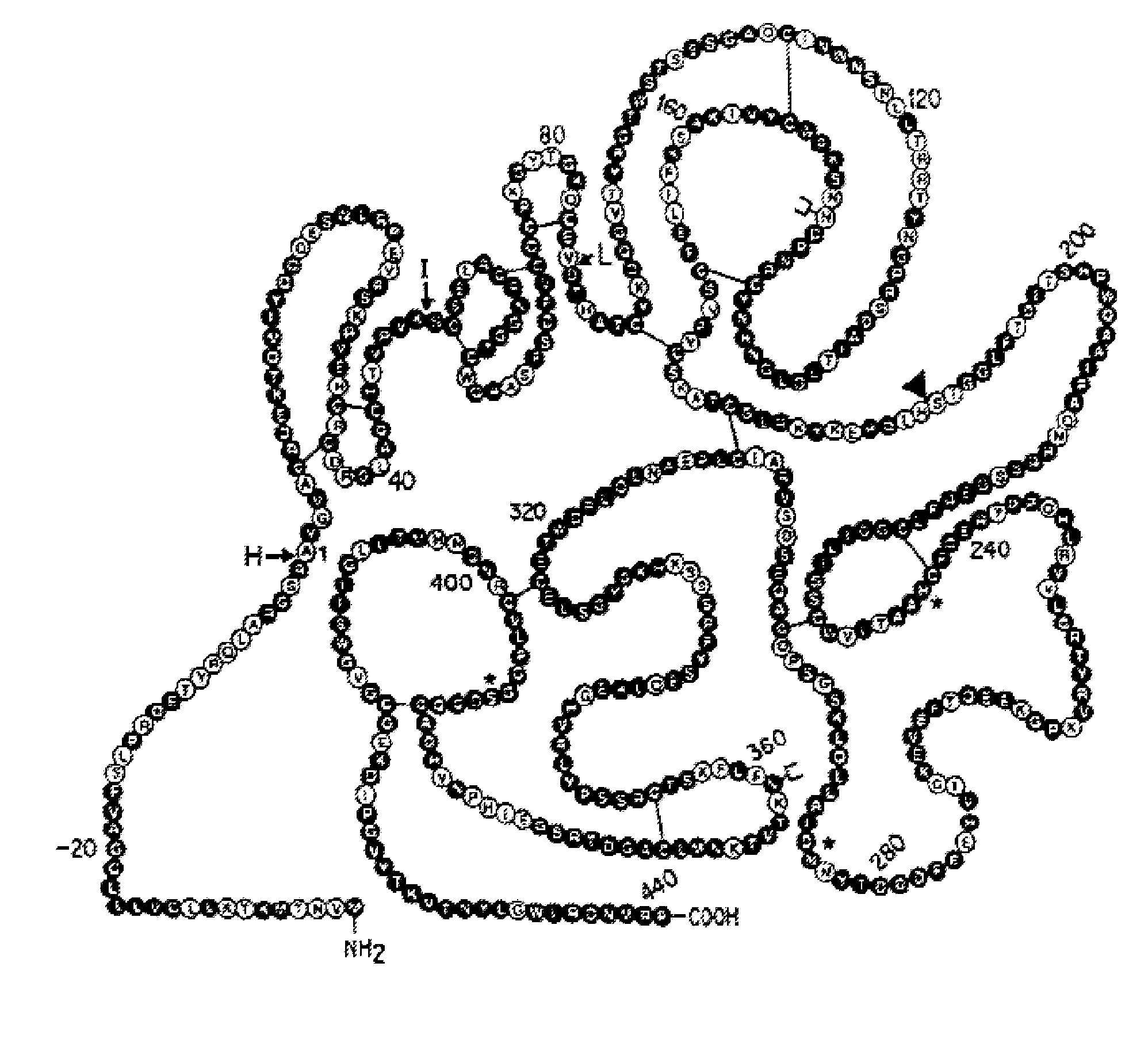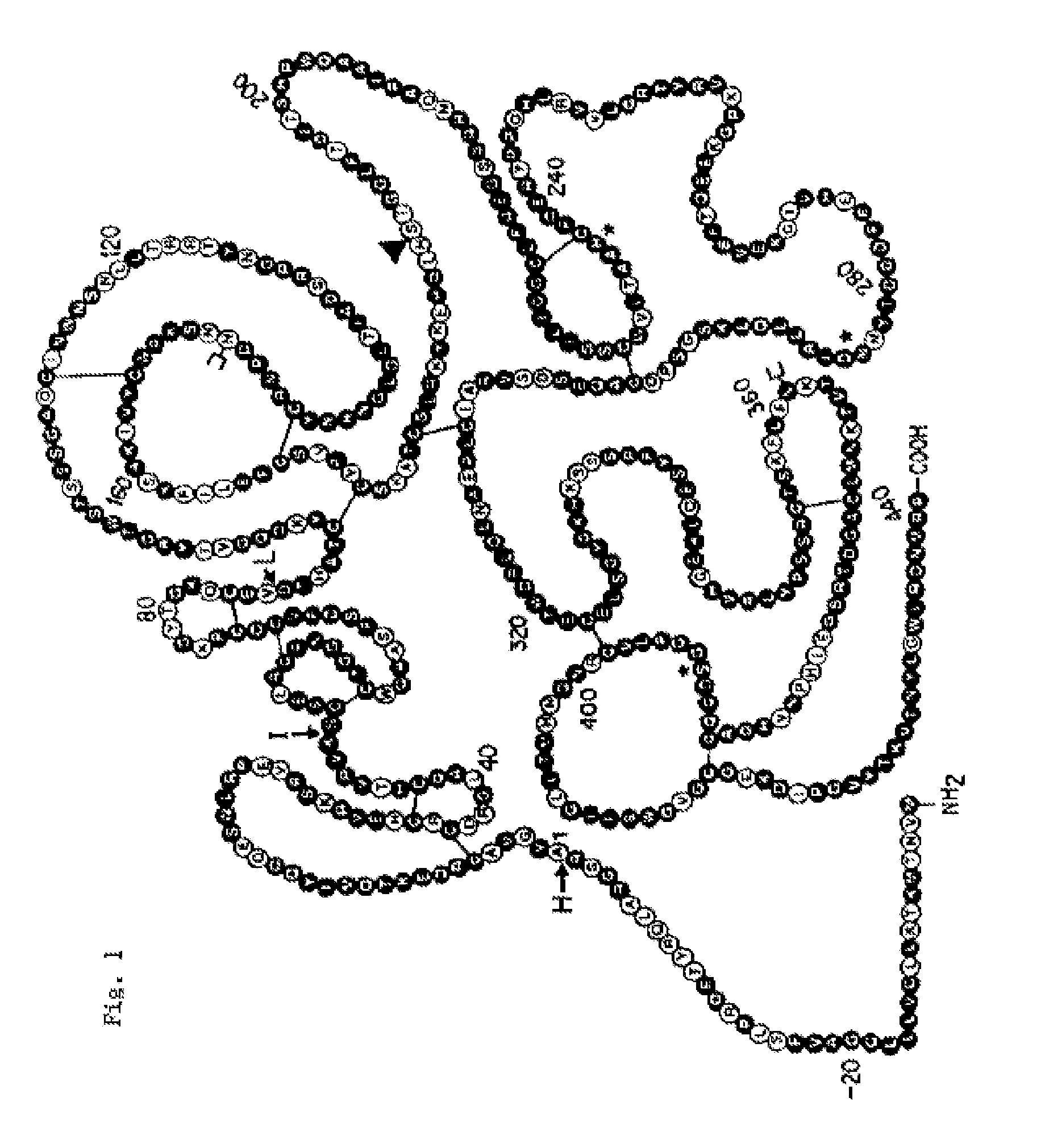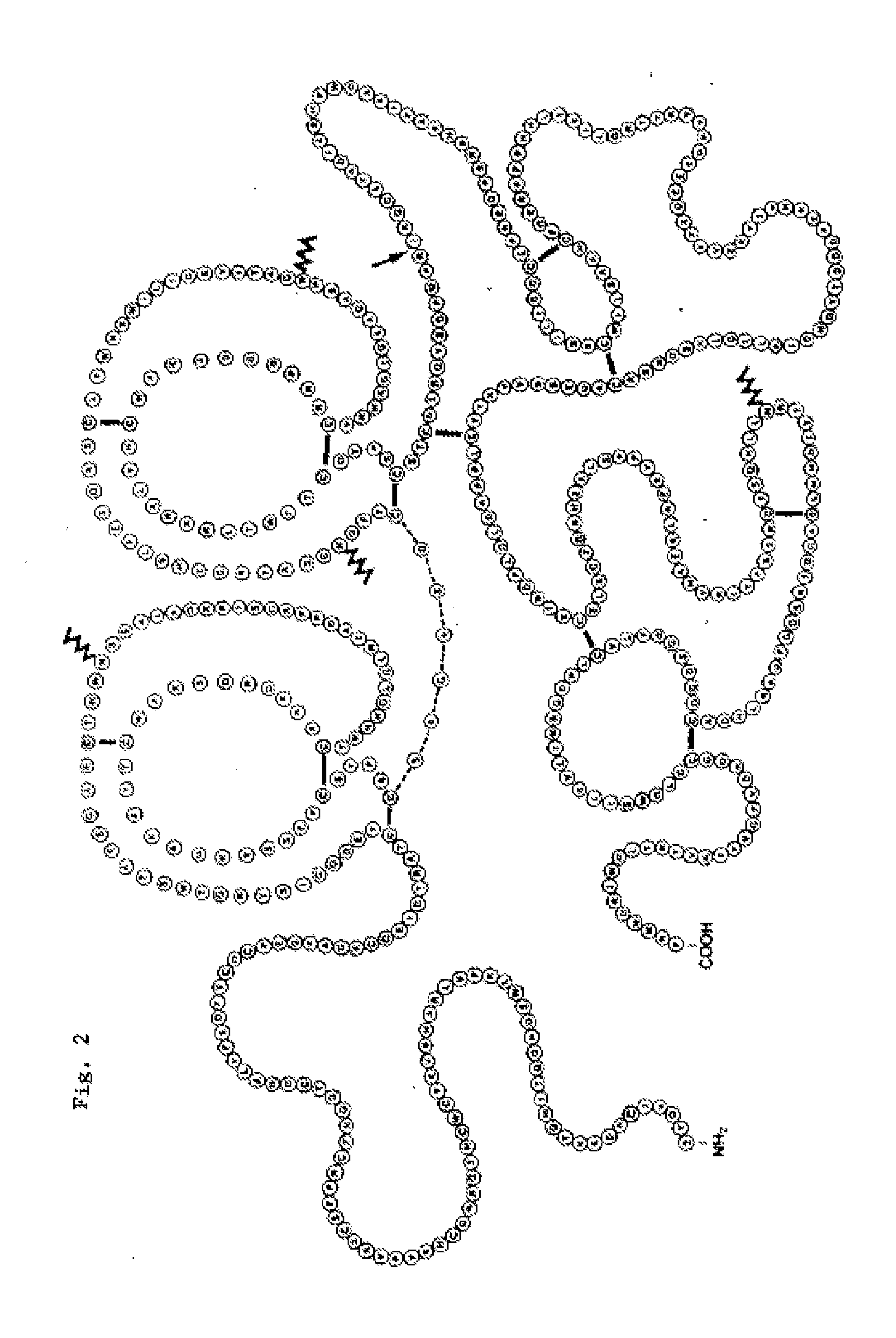Novel patient subgroups for thrombolysis
a patient sub-group and thrombolysis technology, applied in the direction of drug compositions, extracellular fluid disorders, peptide/protein ingredients, etc., can solve the problems of inability to understand possible interactions and consequences, loss of structural integrity of tissue at risk,
- Summary
- Abstract
- Description
- Claims
- Application Information
AI Technical Summary
Benefits of technology
Problems solved by technology
Method used
Image
Examples
example 1
Clinical Benefit of Desmoteplase Treatment in Patients with Moderate to Severe Stroke: Results of the DIAS-2 Trial
[0060]BACKGROUND: Desmoteplase in Acute Ischemic Stroke-2 (DIAS-2) was a randomized, placebo-controlled, double-blind study that investigated the safety and efficacy of Desmoteplase, DSPA, (90 and 125 mcgm / kg) in acute stroke within 3-9 hours after onset of symptoms. The negative intent-to-treat analysis results and an atypically high placebo response rate (46%) prompted a more detailed analysis of clinical and imaging data.
[0061]METHODS: Patients age 18-85, NIHSS 4-24, with a visually apparent penumbral mismatch pattern by investigator judgment on CT (n=64) or MRI (n=122) were randomized to placebo (n=63), 90 mcgm / kg (n=57) or 125 mcgm / kg (n=66) of DSPA. Images were centrally processed and blindly assessed. Clinical response, the primary outcome of the trial, was an improvement on all three stroke scales (NIHSS, mRS and Barthel Index) at 90 days. CT-selected patients we...
example 2
Clinical Benefit of Desmoteplase Treatment in Patients with Moderate to Severe Stroke: Further Results of the DIAS-2 Trial Based on an in-Depth Re-Analysis of the DIAS-2 Data
[0063]BACKGROUND: see above
[0064]METHODS: see above
Results:
[0065]Responder Rates Vs. TIMI Grade
[0066]The DIAS / DEDAS data showed that 38 patients (42.75%) had a TIMI 2-3 at baseline and 51 patients (57.3%) a TIMI 0-1. This differs to the DIAS-2 data where 70.4% of patients had a baseline TIMI 2-3. The highest percentage of baseline TIMI 2-3 was found in the 90 μg / kg (74.1%) and the lowest in the 125 μg / kg group (64.5%) (see table 1).
[0067]Although desmoteplase was not better than placebo in the overall DIAS-2 subjects population, exploring the subgroup of subjects with proximal artery occlusion of TIMI of 0 or 1 or high grade stenosis at baseline revealed an improved response for desmoteplase over placebo (placebo: 17.6%, 90 μg / kg: 35.7%, 125 μg / kg: 27.3%). In the pooled population of DIAS / DEDAS / DIAS-2, desmotepl...
PUM
| Property | Measurement | Unit |
|---|---|---|
| Fraction | aaaaa | aaaaa |
| Fraction | aaaaa | aaaaa |
| Fraction | aaaaa | aaaaa |
Abstract
Description
Claims
Application Information
 Login to View More
Login to View More - R&D
- Intellectual Property
- Life Sciences
- Materials
- Tech Scout
- Unparalleled Data Quality
- Higher Quality Content
- 60% Fewer Hallucinations
Browse by: Latest US Patents, China's latest patents, Technical Efficacy Thesaurus, Application Domain, Technology Topic, Popular Technical Reports.
© 2025 PatSnap. All rights reserved.Legal|Privacy policy|Modern Slavery Act Transparency Statement|Sitemap|About US| Contact US: help@patsnap.com



